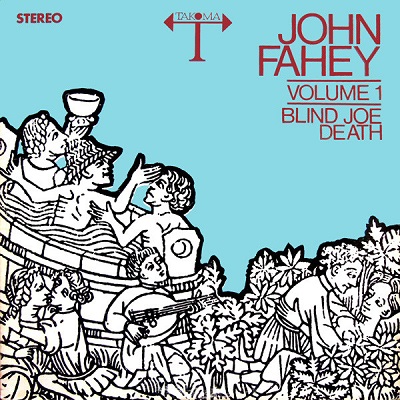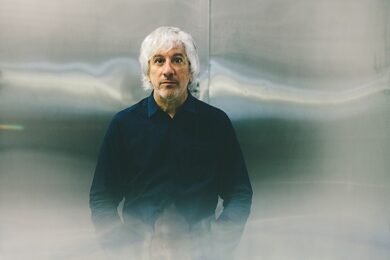1. John FaheyBlind Joe Death

Blind Joe Death was kind of John Fahey’s alter ego. He wanted to put out records under a different name and pretend he was an old obscure bluesman. He was obsessed with collecting these old obscure records that informed his American primitive style and he went on these quests down South to look for old 78 records with a couple of friends of his. Eventually they found this artist Skip James and rejuvenated his career. James wasn’t in music at all any more and he was someone they revered. Fahey was steeped in this whole mythology of his early period of these recording heroes that weren’t on television, weren’t on the magazines and you only saw them if you happened to be in Mississippi where they lived or the rare places they travelled to and I think he really longed to be one of those guys.
So when Fahey started being serious about making his records his idea was “I’m going to make this record, I’m going to call it Blind Joe Death” and this was a totally obscure idea, “I’m going to slip it into bins at record shops and at thrift stores and people will find it and ten or fifteen years from now they’ll say I wonder what happened to Blind Joe Death?”
It’s an obscure task from the very beginning, it’s not like he’s shooting for fame and fortune and Top Of The Pops, it’s almost the opposite of that. He’s shooting for obscurity, for this blissful obscurity that he was relating to. Self-mythologizing but in a way that’s so deep down. It’s not self-mythologizing like whoever does that these days, like Nick Cave or whoever, like somebody who is doing it on a big scale where a lot of people are reading about it, this is like Fahey’s self-mythologizing himself out of existence almost, hoping that 20 years later 5 people will have this record in their collection, ‘cos that’s the kind of guy he was, a guy that would make a record only 5 other people would have.
The original Blind Joe Death was released on only 100 copies and Fahey was developing this style that wasn’t beholden to the pop music of the day or anything like that. He was obviously listening to a lot of different stuff but he was formulating this thing that was really his own basically. It proved really influential to a certain class of people, certainly everybody that was involved in either folk music, or later on folk turning into pop music, or a lot of the people from Sonic Youth’s generation that kind of went back to it.
Fahey was really an antecedent in a way because he was playing in open tunings and playing a lot of stuff that didn’t fit any easy categorisation. Then later on he was doing tape manipulated pieces and adding sounds he recorded from tapes into his acoustic finger-picking stuff and obviously much later he was playing this really weirdo electro distorted music and ploughing his own row in a sense.
I came across him really early for a strange reason and it was for another record that I was going to put on the list, which was a record by Leo Kottke that Fahey put out. Leo Kottke is a much more popular person in the same vein as John Fahey and his early records were on Fahey’s label and he rose to quite a bit more popularity. He’s mostly an instrumental guitar player. He’s a lightning fast, super technical finger-picker with a lot of open tunings and his first record was called Six And Twelve String Guitar – it’s all instrumentals and it was one of the very first records on Fahey’s Takoma label. Somehow I came into that record very early, it’s got a weird black and white woodcut on the cover with an armadillo or something and it’s an amazing record. And after that record I started getting interested in this label Takoma and Fahey’s records were the next ones I found on it and then I realised that it was basically Fahey’s.
Then later, especially when Jim O’Rourke was in Sonic Youth, because he was so tied in with Fahey, we got even more into Fahey at that point. Fahey was also making these primitive artworks. We used a piece of his on the front cover of Sonic Youth’s The Eternal and I collected a bunch of stuff.
A couple of years before he died I managed to do a short tour with him, just a duo tour where we were both playing solo sets and we travelled around in a car for a week or so and he was making all these drawings on the road and I managed to get a couple off him. I’ve got a lot of his work at this point. He just was a very singular character and I think that’s what makes his music so beautiful that he just had his own agenda. He wasn’t kow-towing to the mores of the day or what people expected of their recording artist. He played the game for a little while and then said “oh fuck it”, got fat and weird and just kept doing his thing.


